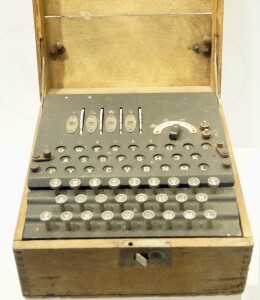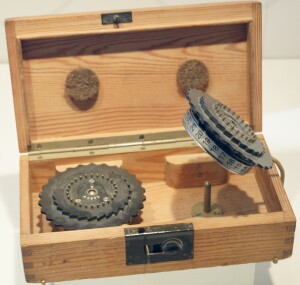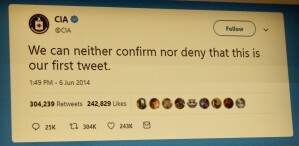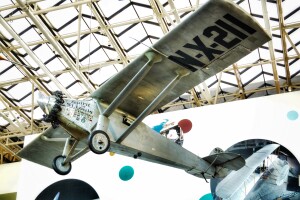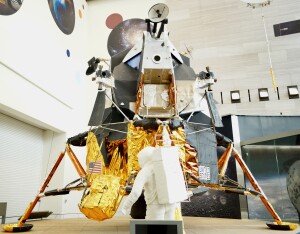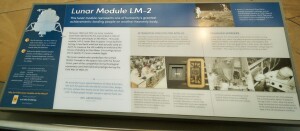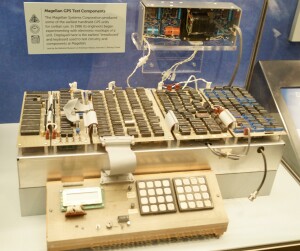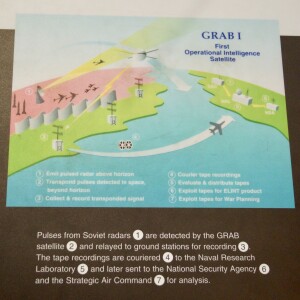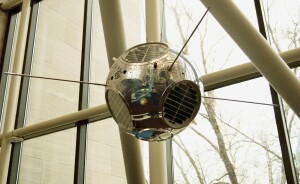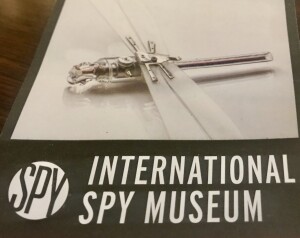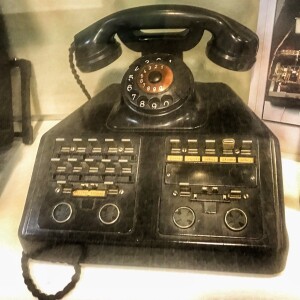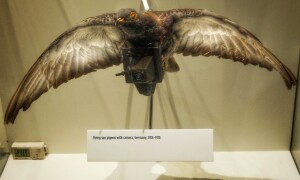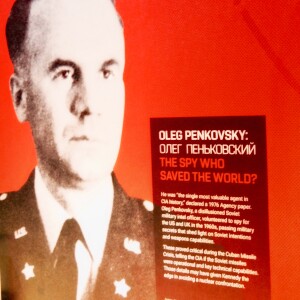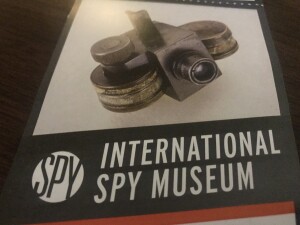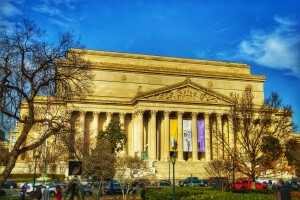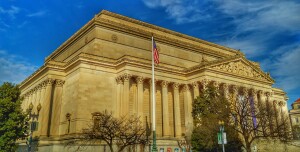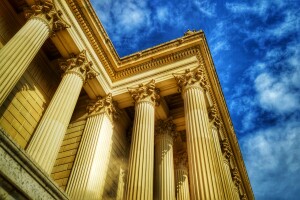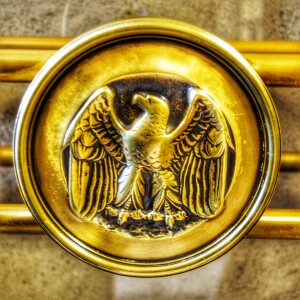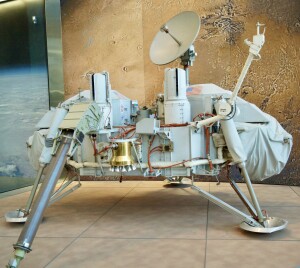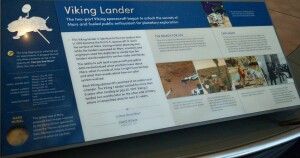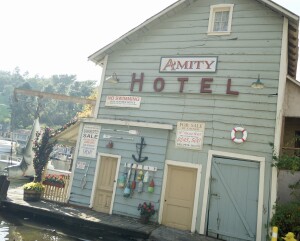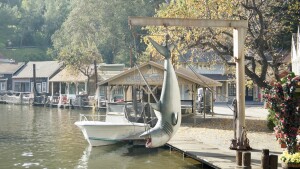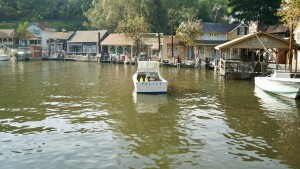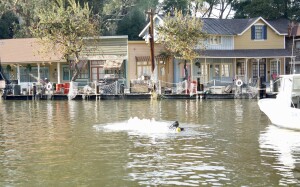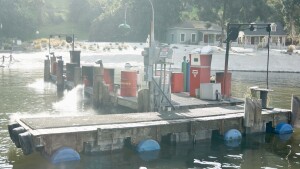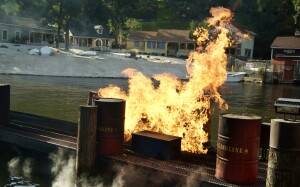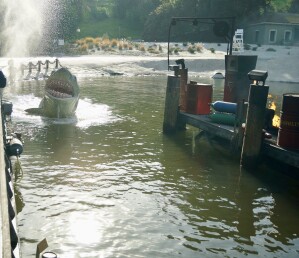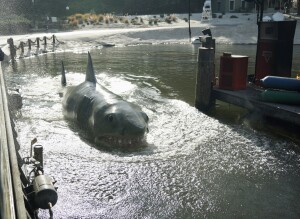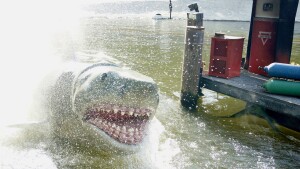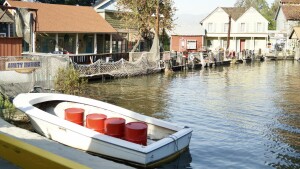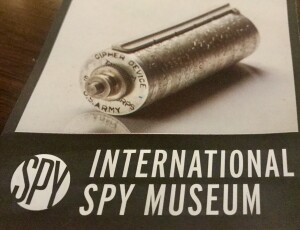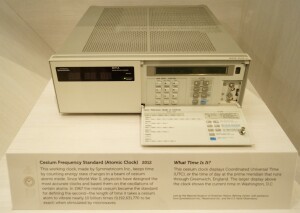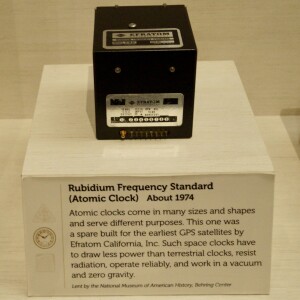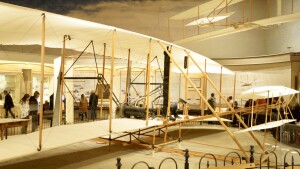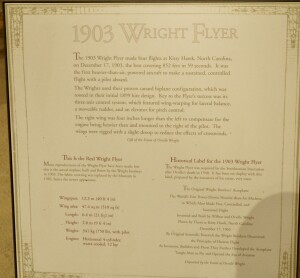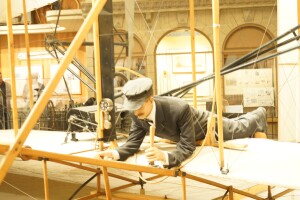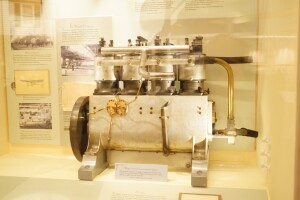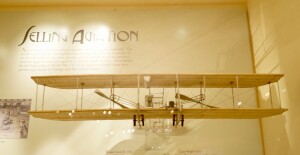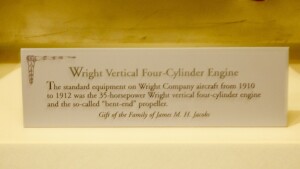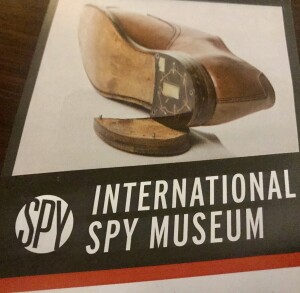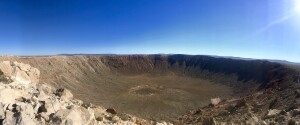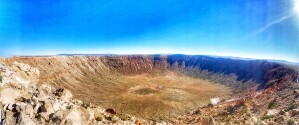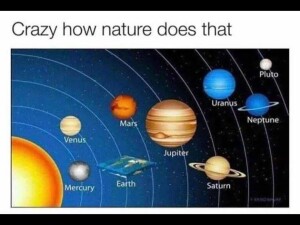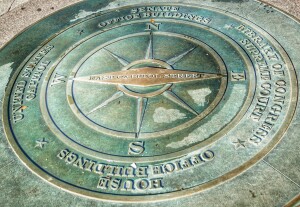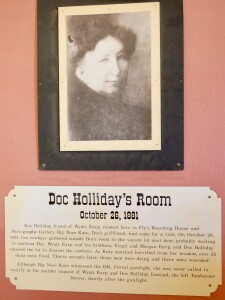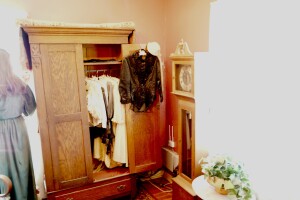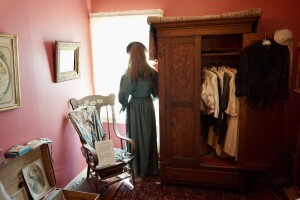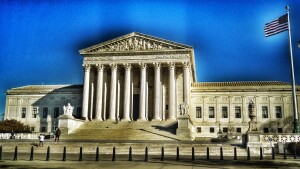German Enigma Machine
This is a four rotor Enigma machine that was created by German around the time of 1943-1944. Germany built this rare Enigma for its ally, Japan. You can tell by both the character and the fourth rotor. Germany was unaware that Britain had cracked the Enigma they added the fourth rotor in 1942 to strengthen it.
The British called the device’s messages “Shark.” It took nearly a year to crack, and only after capturing key sheets from a German U-boat. In the interim, Nazi subs sank more than 2 million tons of Allied supplies.
Lunar Module 2
Between 1969 and 1972, six lunar modules essentially identical to this one landed a total of 12 American astronauts on the Moon. This lunar module, LM-2, never flew into space. It was built for testing in low Earth orbit, but was actually used on Earth to measure the LM’s ability to withstand the forces of landing on the Moon. It is configured as LM-5, Apollo 11’s lunar module Eagle.
The lunar module also symbolizes the United States’ triumph in the space race with the Soviet Union, part of the competition for technological supremacy and International prestige during the Cold War of 1945-91.
Siemens-Halske W38 Phone
This switchboard operator’s desk telephone was manufactured by Siemens-Halske in Germany. It is believe the history of this specific device was removed from one of the U.S. Missions in Germany. A close inspection of the typed labels for the switches are in German.
The telephone was called “REIPOS”. The bulk of the unit is made from Bakelite, a popular material used in the manufacture of early telecommunications equipment. It has 4 incoming lines and 10 outgoing lines. It would have very likely been located at the embassy or consulates operators room.
Oleg Penkovsky: The Spy Who Saved the World
Oleg Penkovsky is best known for being declared as the “single most valuable agent in CIA history.” Penkovsky was a Soviet intelligence officer who volunteered to for the United States and the United Kingdom during the 1960’s. He would pass military intelligence secrets that shed light on Soviet intentions and weapon capabilities. This information proved to be critical during the Cuban missile crisis as it let the CIA know the missiles were operational and key technical capabilities. That information may have given John F. Kennedy the edge he needed in order to avoid a nuclear confrontation.
The United States National Archives
Went to the United States National Archives to see the Constitution, the Declaration of Independence, and the Bill of Rights. I wanted to take a photo of the Constitution, however when I got there they had signs up stating no photography. After inquiring why they informed me it is because the light affects the actual document and the ink on the document. They also informed that previously to get into the building you would have to walk through the front door, however you don’t enter that way anymore because the sunlight that would come into the building every time the door was opened would fade the ink. The room lighting is dim, the documents are kept at a specific temperature range, they are stored in an inert gas, and the light is strictly controlled in order to preserve the documents. Even after learning about all that it was still an awesome experience to be able to see first-hand the most important documents in the United States.
The Viking Lander at the Smithsonian
The Smithsonian Museum of Air and Space located in Washington D.C. is the host to many free exhibits that are the culmination of different major events throughout history for both flight and space travel. The Viking Lander shown here is one of those exhibits. The Viking Lander is best known for being the first U.S. spacecraft to reach the surface of Mars in 1976.
Meteor Crater near Winslow, Arizona
Winslow, Arizona is the home to a gigantic hole in the earth called Meteor Crater. This hole is so big it could fit downtown San Francisco in it. Here are a couple photos that I took with different camera equipment. The second photo I had to stitch multiple photos together to fit the whole crater in it and then I applied some filters to enhance it so more area within the crater was visible and it added a little more drama to the image.
Doc Holliday’s Room in Tombstone
Doc Holliday, friend of Wyatt Earp, room here in Fly’s Boarding House and Photography Gallery. Big Nose Kate, Doc’s girlfriend, had come for a visit. On October 26, 1881 five cowboys gathered outside of Doc’s room in the vacant lot next door, probably waiting to confront Doc. Wyatt Earp and his brothers, Virgil and Morgan Earp, and Doc Holliday entered the lot to disarm the cowboys. As Kate watched horrified from her window, over 25 shots were fired. Thirty seconds later, three men were dying and three men were wounded.
Although Big Nose Kate witnessed the O.K. corral gunfight, she was never called to testify at the murder inquest of Wyatt Earp and Doc Holliday. Instead, she Tombstone forever, shortly after the gunfight.




